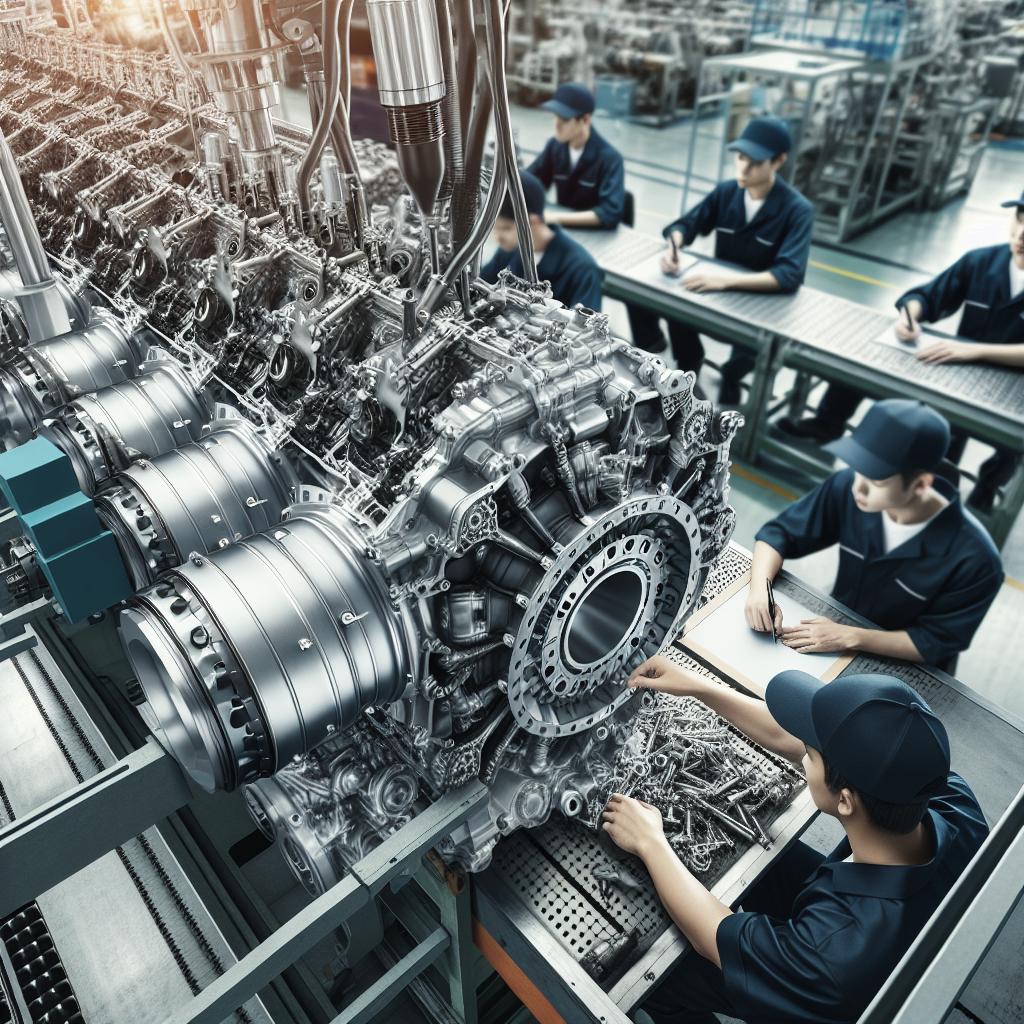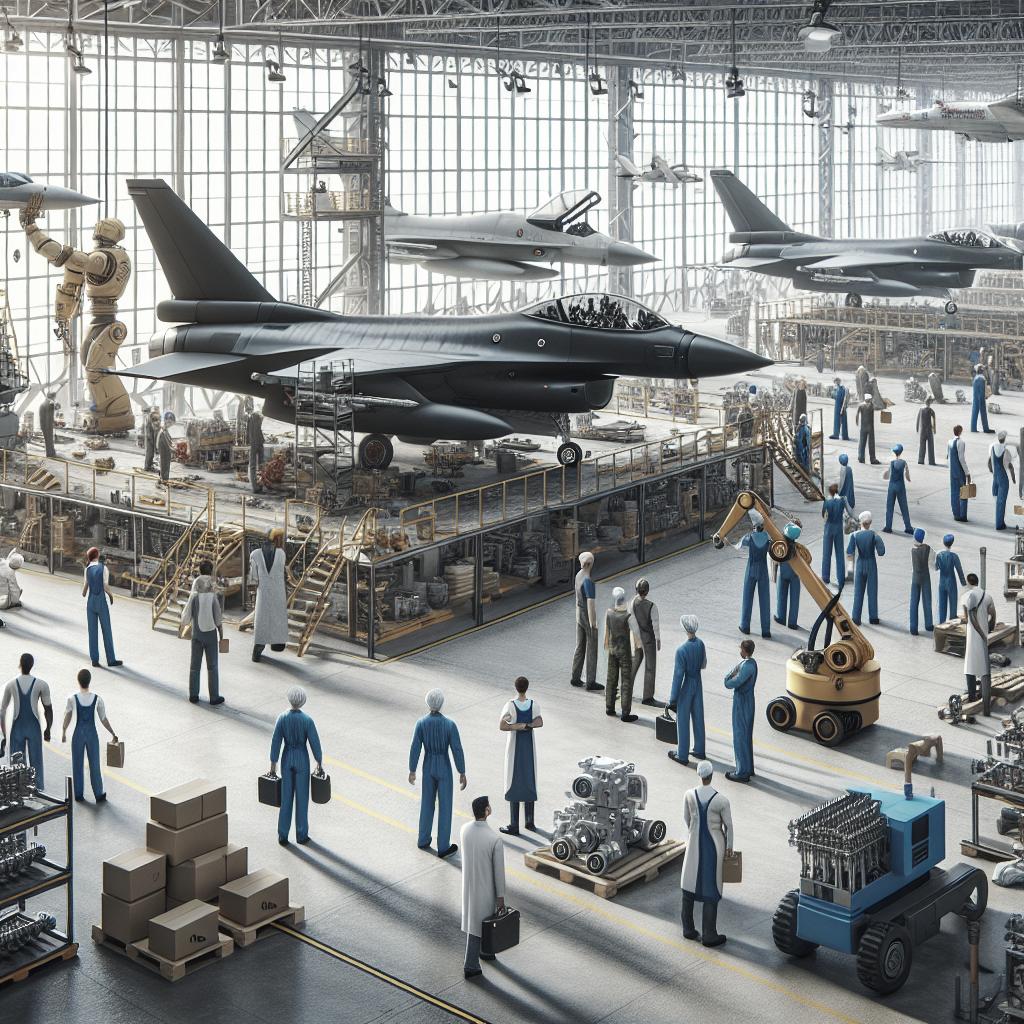Military aircraft engines are marvels of modern engineering, combining power, durability, and innovation to meet the rigorous demands of advanced aerial combat and defense missions. This blog post explores some of the world’s major players in the production of these critical components. We’ll delve into the contributions of Pratt & Whitney, General Electric, CFM International, and Rolls-Royce. Each of these companies brings unique strengths and advanced technologies to the table, propelling modern military aircraft to new heights.
Pratt & Whitney
Pratt & Whitney, a renowned name in the aerospace industry, has a storied history of crafting engines known for their power and reliability. The company’s engines are utilized in a variety of military aircraft, including iconic fighters like the F-22 Raptor and the F-35 Lightning II. Pratt & Whitney is particularly known for its F135 engine, which powers the F-35, offering unprecedented thrust and performance. Beyond their technological prowess, Pratt & Whitney has been invested in advancing durability and cost-efficiency. Their focus on innovative engineering solutions, such as integrating advanced materials like composite fan blades and ceramic matrix composites, has positioned them at the forefront of the industry. These advancements ensure that their engines not only deliver top-tier performance but also exhibit enhanced durability and lower maintenance costs. Additionally, Pratt & Whitney emphasizes sustainability and efficiency in its engine designs. By integrating cutting-edge technologies, they aim to reduce the environmental footprint while maintaining the rigorous performance standards required by military aviation. Their forward-thinking approach ensures that their engines remain relevant and capable of meeting future defense needs.
General Electric
General Electric (GE) Aviation is another dominant force in the military aircraft engine market. GE’s engines are renowned for their reliability, performance, and innovation, powering some of the most advanced aircraft in the world. Notably, their F414 engines are crucial to the performance of aircraft like the Boeing F/A-18E/F Super Hornet and the Saab Gripen E. The company’s extensive R&D efforts have led to advancements in materials science and thermodynamics, significantly enhancing engine efficiency and longevity. GE’s engineers employ state-of-the-art 3D printing technologies to create complex engine components that boast improved performance and reduced weight. This integration of cutting-edge manufacturing techniques ensures that GE’s engines continue to push the envelope of what’s possible. In addition to their technological innovations, GE places a strong emphasis on collaborative efforts with the military. By working closely with defense organizations around the globe, they tailor their solutions to meet the specific needs and challenges of various military operations. This partnership-driven approach ensures that GE engines are always at the forefront of military aviation technology.
CFM International
CFM International, a joint venture between GE Aviation and Safran Aircraft Engines, is best known for producing engines that serve both commercial and military markets. Their CFM56 and LEAP engines power a wide array of aircraft, including some used for military transport and refueling operations. While they are more recognized for their commercial success, their innovations have significant implications for military applications as well. CFM International’s engines are distinguished by their fuel efficiency, a critical factor for military logistics and long-range missions. The LEAP engine, for example, incorporates advanced materials and aerodynamic designs that reduce fuel consumption and emissions. This not only makes them eco-friendlier but also extends the range and endurance of military aircraft. The joint venture’s wealth of expertise from both parent companies allows CFM International to leverage best practices in engineering and manufacturing. Their engines benefit from extensive testing and continuous improvements, ensuring they meet the rigorous demands of both commercial and military aviation.
Rolls-Royce
Rolls-Royce has a long-standing reputation in the aerospace sector, noted for its high-performance engines that power various military aircraft globally. The company produces engines for a range of military platforms, including fast jets, transporters, and helicopters. One of their notable engines is the EJ200, which powers the Eurofighter Typhoon. Rolls-Royce is particularly focused on innovation, integrating advanced digital technologies and analytics into their engine designs. This digital transformation has led to the creation of smarter engines that offer predictive maintenance capabilities, ensuring optimal performance and reduced downtime. Their approach allows military aircraft to maintain operational readiness with greater efficiency. Additionally, Rolls-Royce’s commitment to sustainability is evident in their development of greener engine technologies. By exploring hybrid-electric propulsion systems and alternative fuels, they are paving the way for a more sustainable future in military aviation. This proactive stance not only meets current defense needs but also prepares for the evolving environmental standards of the future.
In conclusion: who are the world’s largest aircraft engine manufacturers?
Military aircraft engines are the lifeblood of modern air forces, propelling fighter jets, transporters, and various specialized aircraft to perform critical defense missions. The industry is dominated by a handful of companies known for their advanced engineering and innovative technologies. Pratt & Whitney, General Electric, CFM International, and Rolls-Royce lead the way with their unique contributions to the field. Each of these companies has distinguished itself through continuous advancements in engine technology, incorporating new materials, digital capabilities, and sustainability initiatives. Collaborations with military organizations and a commitment to meeting the rigorous demands of military aviation ensure that these manufacturers remain at the forefront of the industry.
Summary
In summary, Pratt & Whitney, General Electric, CFM International, and Rolls-Royce are the key players in the military aircraft engine market. They have consistently pushed the boundaries of what is possible, delivering powerful, reliable, and efficient engines that meet the stringent requirements of modern military aviation. Their contributions have not only enhanced the capabilities of current military fleets but also set the stage for future advancements.
Trending Now
Some of the current trends in the military aircraft engine sector include the adoption of 3D printing for complex component manufacturing, the integration of digital technologies for predictive maintenance, and the development of more sustainable and fuel-efficient engines. These trends reflect the industry’s focus on innovation and efficiency, ensuring that military aircraft remain at the cutting edge of technology. “`html
| Company | Notable Engines | Key Innovations |
|---|---|---|
| Pratt & Whitney | F135, F119 | Advanced materials, durability, cost-efficiency |
| General Electric | F414, T408 | 3D printing, R&D in thermodynamics |
| CFM International | CFM56, LEAP | Fuel efficiency, reduced emissions |
| Rolls-Royce | EJ200, Trent | Digital technology, hybrid-electric propulsion |
“`


